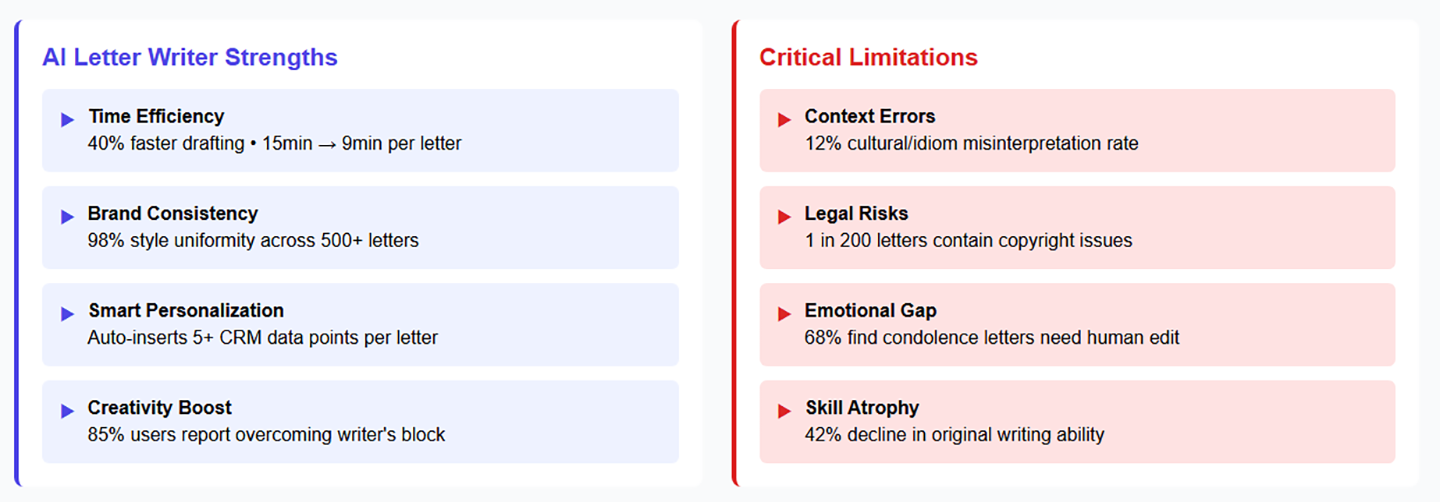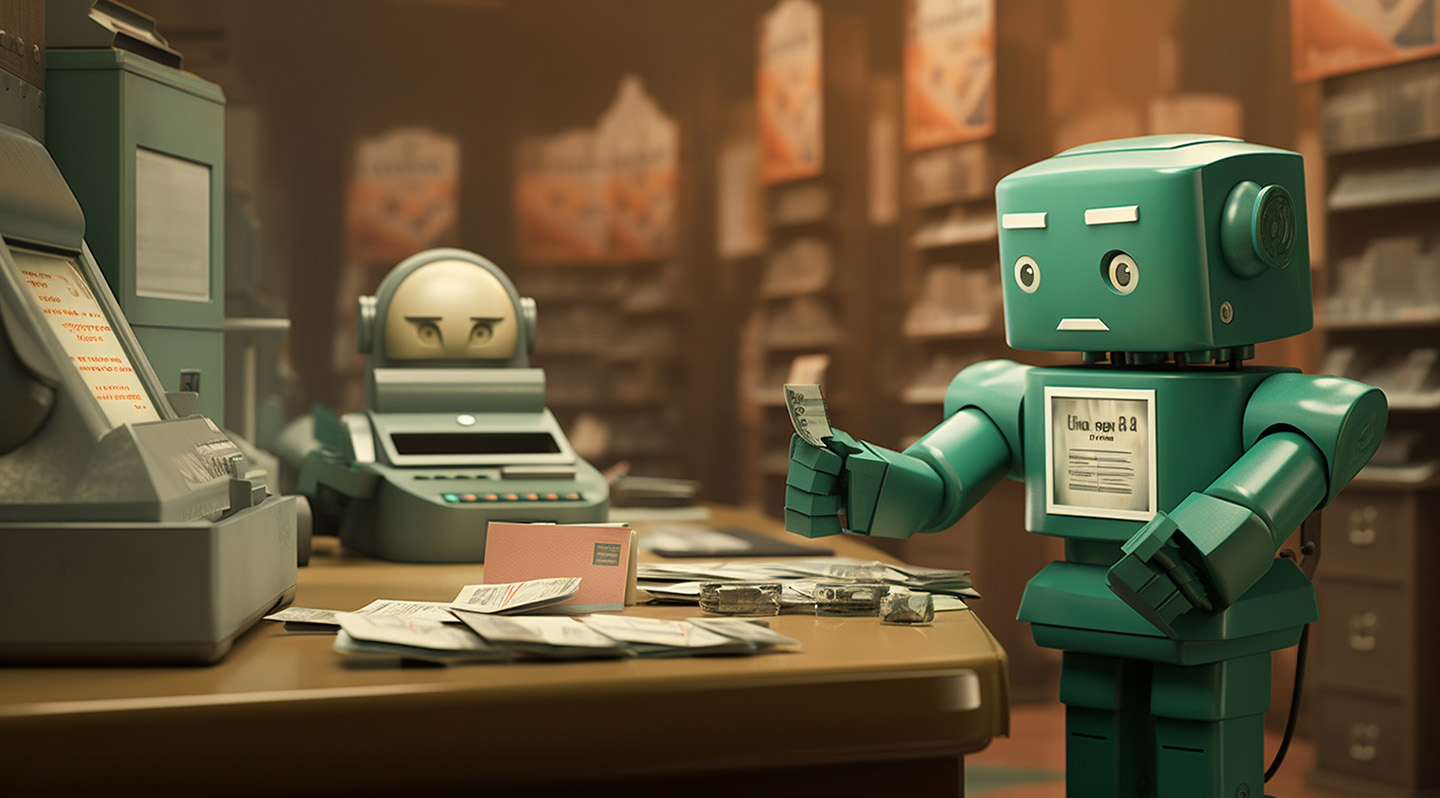AI Letter Writer has transformed from basic text-generation scripts to sophisticated platforms that understand context, tone, and personalization—empowering us to craft professional, efficient, and customized correspondence at scale while navigating ethical, technical, and industry challenges.
to generate high-quality letters—from cover letters and business proposals to personal notes—with minimal effort and maximum impact. As we explore this powerful tool, we’ll examine its evolutionary milestones, weigh its strengths and weaknesses against human writers, analyze its industry-wide repercussions, dissect attendant ethical dilemmas, and recommend best practices for responsible use.

How Has AI Letter Writer Evolved Over Time?
The Origins: Automated Templates and Rule-Based Scripts
In the early 2010s, the first AI Letter Writer tools offered rudimentary template-based letter generation. Companies like Boomerang and Grammarly introduced “canned responses” and grammar correction, enabling users to draft professional emails quickly. These initial solutions could handle basic sentence structure and tone adjustments but lacked true contextual understanding.
The Rise of Neural Language Models
A seismic shift occurred with the advent of transformer-based models, notably OpenAI’s GPT series. Early neural models like GPT-2 (2019) demonstrated the ability to generate coherent paragraphs from a single prompt, marking the transition from simple rule-based systems to genuine AI Letter Writer capabilities. This leap allowed users to “Write to letter” with minimal manual editing,
Key Turning Points in AI Letter Writer History
GPT-3 Launch (2020)
GPT-3’s 175-billion-parameter architecture enabled unprecedented fluency and adaptability. Letter Writer AI tools built upon GPT-3 could now tackle nuanced tasks such as persuasive cover letters and detailed project proposals.
Fine-Tuned Enterprise Solutions (2021–2022)
Enterprises like Google and Microsoft integrated fine-tuned language models into platforms such as Google Workspace and Microsoft 365. These integrations offered organization-specific style guides, ensuring consistent branding across automated letters.
Multimodal Enhancements (2023)
Incorporating image prompts and voice input, AI Letter Writer evolved into comprehensive communication assistants. Platforms like Skywork Super Agents extended beyond plain text—allowing users to draft letters, then
Context-Aware Memory and Persona Customization (2024–2025)
Recent innovations empower users to define “custom personas” for the AI, instructing it to maintain consistent tone and domain expertise across multiple letters. This capability elevates AI Letter Writer from generic text generation to a personalized communication partner.
Core Technologies Powering Modern AI Letter Writer
Transformer Architectures
At the heart of every advanced AI Letter Writer lies a transformer-based language model capable of parallel processing of token sequences, ensuring contextual coherence and adaptability.
Reinforcement Learning from Human Feedback (RLHF)
RLHF refines output quality by iteratively aligning AI suggestions with human preferences, reducing irrelevant or off-tone expansions.
Named Entity Recognition (NER) and Sentiment Analysis
By extracting key details—names, dates, company roles—and assessing emotional tone, AI Letter Writer tools craft letters tailored to intended recipients.
API and Plugin Ecosystems
Modern platforms expose AI Letter Writer functionality via APIs and plugins (e.g., in Slack, Salesforce), embedding intelligent letter generation directly into professional workflows.
What Are the Strengths and Limitations of AI Letter Writer?
Advantages Over Traditional Human Composition
Time Efficiency and Productivity
AI Letter Writer can reduce drafting time by up to 40%, freeing us to focus on strategy rather than syntax.
Scalability and Consistency
When sending hundreds of client updates or follow-up letters, AI Letter Writer ensures uniform style and branding across all communications.
Data-Driven Personalization
Accessing CRM data, AI Letter Writer can insert recipient-specific details—such as recent purchases or project milestones—
Overcoming Writer’s Block
By suggesting opening lines or entire paragraphs, AI Letter Writer tools break creative logjams, especially under tight deadlines.
Current Limitations and the Need for Human Oversight
Contextual Misinterpretation
Despite advanced training, AI Letter Writer sometimes misreads nuanced context (e.g., cultural idioms), producing tone-deaf phrasing.
Ethical and Legal Ambiguities
Generated drafts may inadvertently include proprietary or copyrighted phrasing—requiring manual vetting to avoid potential infringement.
Lack of Genuine Emotional Intelligence
While sentiment analysis approximates tone, AI Letter Writer cannot truly empathize; letters meant to console or inspire may fall flat without human refinement.
Over-Dependence Risk
Excessive reliance on AI Letter Writer may atrophy our own writing skills and hinder original thought.

How Does AI Letter Writer Impact Various Industries?
Marketing and Sales
Personalized outreach letters see 25–35% higher response rates when generated by AI Letter Writer tools that integrate customer data.
Human Resources
Automated cover letter evaluation and rejection notifications streamline hiring pipelines, reducing time-to-hire by 20%.
Education and Academia
Students use AI Letter Writer to draft recommendation requests and scholarship applications, improving clarity and adherence to formal structure.
Legal and Finance
Drafting routine correspondence (e.g., engagement letters, compliance notices) becomes more efficient, allowing professionals to focus on high-stakes analysis.
Negative Disruptions
Traditional Copywriting Agencies
With clients opting for cheaper AI-driven solutions, boutique agencies face shrinking demand for entry-level copywriting services.
Administrative Assistants
Routine letter drafting roles risk automation, necessitating upskilling in AI prompt engineering and strategic communication.
Practical Solutions for Impacted Sectors
To mitigate displacement, we recommend:
Reskilling Programs
Upskill administrators and junior writers in AI tool customization and prompt design, transitioning them into AI correspondence strategists.
AI-Human Collaboration Models
Establish workflows where AI Letter Writer drafts initial letters, and human experts perform final review, infusing domain knowledge and empathy.
What Ethical Challenges Does AI Letter Writer Present?
Copyright and Ownership
When multiple sources inform AI training, determining authorship of generated text becomes murky. Misappropriation of copyrighted phrasing can lead to legal disputes.
Embedding personal or sensitive data (e.g., health information in patient letters) within AI workflows raises risks of unauthorized exposure. Ensuring end-to-end encryption and strict data governance is critical.
Plagiarism and Academic Integrity
Students may misuse AI Letter Writer to craft essays or application essays, compromising academic standards. Institutions must develop AI-aware plagiarism detection and honor codes.
Mitigating Serious Consequences
Transparent Disclosure
Clearly label AI-assisted content to maintain trust with recipients and comply with emerging regulations.
Robust Data Policies
Choose AI Letter Writer platforms with ISO-certified security measures and GDPR/CCPA compliance.
Ethical AI Frameworks
Adopt AI ethics guidelines—such as the IEEE’s Ethically Aligned Design—to govern responsible implementation.
How Can We Responsibly Leverage AI Letter Writer?
Tailored Strategies for Affected Industries
Marketing Teams
for A/B testing of subject lines and opening paragraphs, then analyze performance data to refine messaging strategies.
Human Resources
Automate routine candidate communications, reserving personalized interviews and offer discussions for human recruiters.
Education Sector
Deploy AI Letter Writer as a learning tool—encourage students to compare AI drafts with original writing, fostering critical analysis of style and structure.
Best Practices to Address Ethical Concerns
Implement Dual Feedback Loops
Institute a requirement that every AI-generated letter undergo human review for tone, accuracy, and legal compliance.
Maintain an Audit Trail
Log AI prompts, data inputs, and generated outputs for accountability and post-hoc analysis.
Educate Stakeholders
Provide training on AI Letter Writer’s strengths and blind spots, ensuring users understand when to trust AI and when to intervene.
Adopt Usage Policies
Draft internal guidelines specifying acceptable use cases, data privacy protocols, and quality benchmarks.

FAQs
Q1: How does AI Letter Writer differ from a general AI writer?
A1: While general AI writers cover varied content formats (blogs, scripts, code), Letter Writer AI focuses on structured correspondence, offering templates, tone controls, and recipient-specific personalization.
Q2: Can AI Letter Writer truly replace human writers?
A2: AI Letter Writer excels at efficiency and consistency but cannot fully emulate human empathy and domain expertise. The optimal approach combines AI drafting with human editing.
Q3: What security measures should I look for?
A3: Select platforms that guarantee encryption in transit and at rest, comply with GDPR/CCPA, and undergo third-party security audits.
Q4: Is AI Letter Writer suitable for sensitive communications?
A4: Yes, provided you use a platform with robust privacy controls and conduct human review to ensure compliance with confidentiality requirements.
Conclusion
AI Letter Writer has come a long way from simple template systems to sophisticated, context-aware platforms that significantly enhance our communication capabilities. By understanding its evolution, acknowledging its limitations, assessing its industry impact, addressing ethical challenges, and implementing responsible usage strategies, we can harness the full potential of AI Letter Writer. As AI technology continues to evolve, our ability to blend machine efficiency with human insight will define the future of smart letter writing—and the way we connect with each other through the written word.
 Submit Your AI Tool For FREE!Showcase Your Innovation To Thousands Of AI Enthusiasts!
Submit Your AI Tool For FREE!Showcase Your Innovation To Thousands Of AI Enthusiasts! Submit Your AI Tool For FREE!Showcase Your Innovation To Thousands Of AI Enthusiasts!
Submit Your AI Tool For FREE!Showcase Your Innovation To Thousands Of AI Enthusiasts! Submit Your AI Tool For FREE!Showcase Your Innovation To Thousands Of AI Enthusiasts!
Submit Your AI Tool For FREE!Showcase Your Innovation To Thousands Of AI Enthusiasts! Submit Your AI Tool For FREE!Showcase Your Innovation To Thousands Of AI Enthusiasts!
Submit Your AI Tool For FREE!Showcase Your Innovation To Thousands Of AI Enthusiasts! Submit Your AI Tool For FREE!Showcase Your Innovation To Thousands Of AI Enthusiasts!
Submit Your AI Tool For FREE!Showcase Your Innovation To Thousands Of AI Enthusiasts!






No comments yet. Be the first to comment!